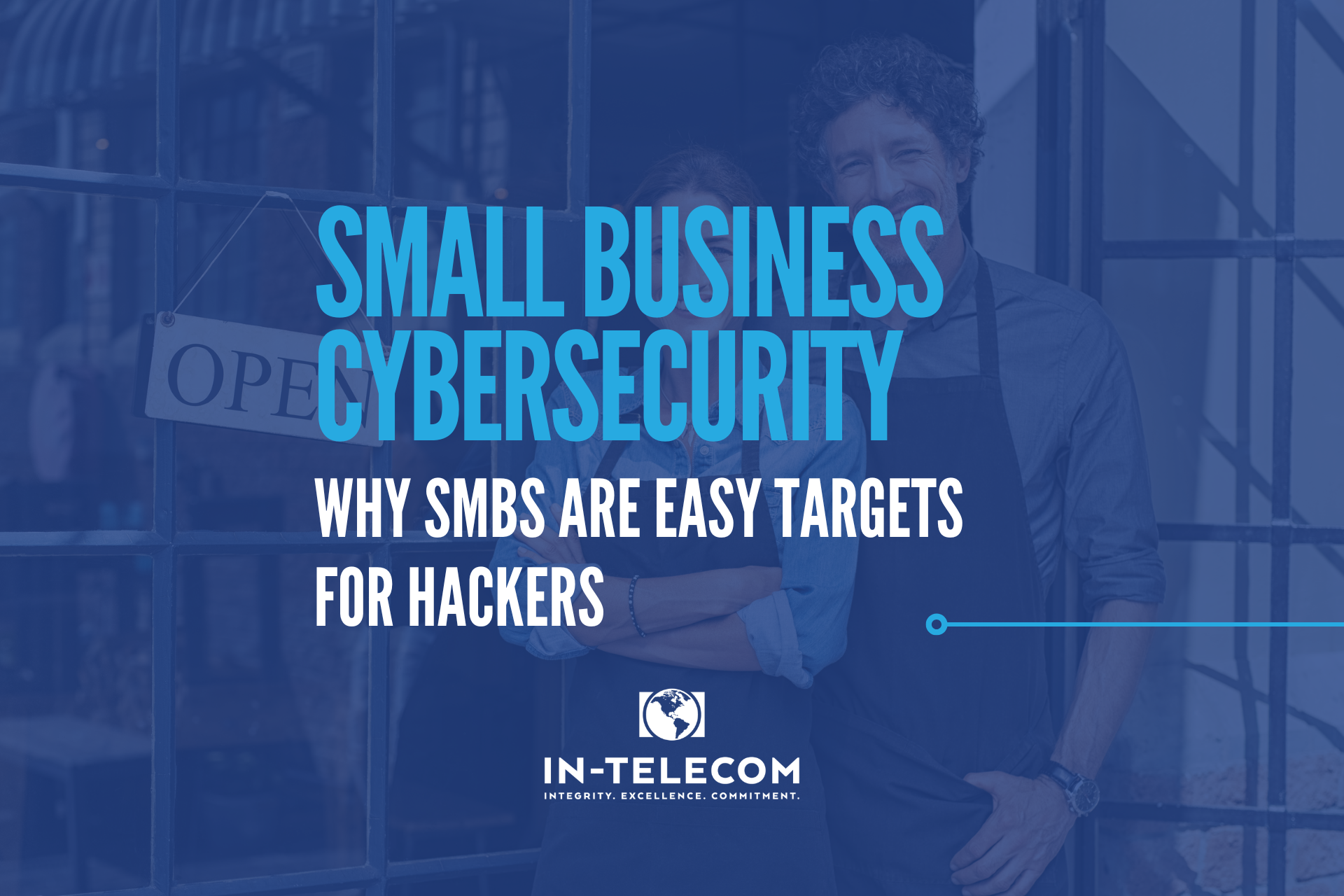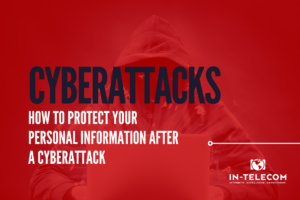
Cybersecurity has become a critical concern for businesses across the globe. Organizations of all sizes, from multinational corporations to local startups, are vulnerable to cyber threats. However, small to medium-sized businesses (SMBs) often find themselves at the center of hackers’ crosshairs.
Cybersecurity services are an essential aspect of any modern business operation. With the increasing digitization of processes and the growing reliance on technology, organizations must safeguard their networks, data, and systems against malicious actors.
The consequences of a successful cyber attack can be devastating, ranging from financial losses to reputational damage, operational disruptions, and legal liabilities.
65% of Cyberattack Victims are Small to Medium Sized Businesses
Connectwise
Table of Contents
While large enterprises often dominate the headlines regarding high-profile data breaches, SMBs are far from immune to cyber threats. For various reasons, they have become prime targets for hackers. SMBS must understand the motivations behind these attacks and take proactive measures to strengthen their cybersecurity posture.
By gaining insight into the specific vulnerabilities and challenges SMBs face, we can better equip ourselves to defend against cyber threats and protect our businesses and customers from potential harm.
What is a Small to Medium-Sized Business?
Small to medium-sized businesses (SMBs) form the backbone of economies worldwide. While there is no universally agreed-upon definition, SMBs are generally characterized by their relatively small scale of operations, limited resources, and a more localized customer base than large enterprises. These businesses encompass various industries, including retail, healthcare, hospitality, professional services, and manufacturing.
SMBs often operate with limited budgets and a smaller workforce, which can impact their ability to allocate dedicated resources to cybersecurity. Additionally, decision-making processes within SMBs may be less complex, leading to a potential oversight of cybersecurity measures and leaving them more vulnerable to attacks.
Misconceptions Regarding SMBs and Cybersecurity
There are common misconceptions that SMBs are less likely to be targeted by cybercriminals due to their smaller size or limited data assets. However, these assumptions are far from the truth. In reality, SMBs possess valuable data, such as customer information, intellectual property, and financial records, which can be monetarily beneficial to cyber criminals.
Cyber attackers often exploit vulnerabilities in supply chains, using SMBs as a stepping stone to gain access to larger organizations. This highlights the interconnectedness of businesses and the need for comprehensive cybersecurity practices across all sectors and company sizes.
Why Do Hackers Target SMBs?
Cybercriminals have various motivations for targeting small to medium-sized businesses (SMBs). Understanding these motivations is crucial to comprehend why SMBs are attractive targets for hackers. Here are some key reasons:
Limited Cybersecurity Infrastructure and Resources
Small business cybersecurity often suffers from a lack of budget and resources. Compared to larger enterprises that can invest in advanced security technologies, dedicated IT teams, and cybersecurity professionals, SMBs often need help to implement comprehensive security measures. This lack of investment in cybersecurity infrastructure makes them an appealing target for hackers seeking to exploit vulnerabilities.
43% of small to medium-sized businesses do not have a recovery plan for a cybersecurity incident.
Connectwise
Perception of Weaker Defenses Compared to Large Enterprises
Hackers often perceive SMBs as easier targets due to the common belief that they have weaker defenses. This perception stems from the assumption that SMBs are less likely to have robust cybersecurity practices, making them more susceptible to attacks. By targeting SMBs, hackers can quickly gain unauthorized access to sensitive data and networks.
High Potential for Financial Gain
While SMBs may not possess the financial resources of larger enterprises, they still handle valuable assets that can be monetarily rewarding for cyber criminals. These assets include customer data, payment information, trade secrets, and intellectual property. Hackers target SMBs to directly exploit these assets for financial gain or leverage them as stepping stones to infiltrate larger organizations.
Access to Valuable Data and Sensitive Information
SMBs often collaborate with larger enterprises in their supply chains or partnerships. Hackers recognize this interconnectedness and target SMBs to access larger organizations’ systems and data. By breaching an SMB’s network, cybercriminals can exploit the trust between the SMB and its partners, leading to potential breaches across the entire ecosystem.
Understanding the motives behind targeting SMBs allows businesses to comprehend better the risks they face. It also emphasizes the importance of implementing robust cybersecurity measures and investing the necessary resources to protect against cyber threats.
Small Business Cybersecurity Tends to Be Lacking
Several factors contribute to small to medium-sized businesses’ (SMBs) vulnerability regarding cybersecurity. Understanding these factors is essential for SMBs to assess their security posture and identify areas that require improvement. Here are some key factors that make SMBs vulnerable to cyber attacks:
Lack of Cybersecurity Awareness and Training
SMBs often need more cybersecurity awareness and training among their employees. With proper education and training, employees may know potential threats or the best practices to mitigate them. This lack of awareness increases the likelihood of falling victim to phishing attacks, social engineering tactics, or other forms of cyber deception.
57% of Small Businesses have not trained all users or employees on cybersecurity.
Connectwise
Insufficient Investment in Security Measures
Limited budgets and resources often make SMBs invest less in robust security measures. They may rely on basic antivirus software or outdated security solutions, which may need to be more effectively protected against advanced cyber threats. Additionally, SMBs may neglect regular security updates and patches, leaving their systems and software vulnerable to known vulnerabilities.
Reliance on Outdated Software and Systems
SMBs may continue to use outdated software and legacy systems due to cost considerations or a lack of knowledge about the risks. These obsolete technologies are more susceptible to attacks as they may lack the latest security features, patches, and updates. Hackers actively exploit vulnerabilities in outdated systems to gain unauthorized access to sensitive information. They may be working with a managed service provider to assist them, but they may not keep track of outdated systems.
Inadequate Incident Response Capabilities
SMBs may need well-defined incident response plans or dedicated personnel handling cybersecurity incidents. This lack of preparedness can significantly impact the organization’s ability to respond effectively to a cyber attack. Delayed or ineffective incident response can lead to extended downtime, increased damages, and prolonged exposure of sensitive data.
Addressing these vulnerability factors is crucial for SMBs to enhance their cybersecurity posture. By prioritizing cybersecurity awareness and training, investing in robust security solutions, keeping software and systems up to date, and developing effective incident response capabilities, SMBs can significantly reduce their risk of falling victim to cyber-attacks.
Types of Attacks Commonly Executed Against SMBs
Small to medium-sized businesses (SMBs) face various cyber threats, with attackers employing various tactics to compromise security. Understanding these common types of attacks is crucial for SMBs to recognize potential risks and take appropriate preventive measures. Here are some prevalent attack methods that cybercriminals often use against SMBs:
Hackers work around the clock, pulling off a successful cyberattack every 39 seconds.
The University of Maryland
Phishing and Social Engineering Attacks
Phishing attacks involve tricking individuals into divulging sensitive information, such as login credentials or financial details, by impersonating a trustworthy entity. Cybercriminals often send deceptive emails and messages or call SMB employees, posing as legitimate organizations or individuals. Social engineering attacks exploit human psychology and trust, making employees more susceptible to manipulation and inadvertently providing access to sensitive data.
Ransomware and Data Breaches
Ransomware attacks involve encrypting an SMB’s data and demanding a ransom for the decryption key. SMBs are desirable targets for ransomware attacks due to their perceived vulnerability and potentially limited backup and recovery mechanisms. Data breaches involve unauthorized access to sensitive information, such as customer data or intellectual property, which can be exploited for financial gain or sold on the dark web.
Supply Chain Attacks and Third-party Vulnerabilities
SMBs rely on third-party vendors, suppliers, or service providers to support their operations. Hackers may target these trusted partners to gain unauthorized access to an SMB’s network or systems. Supply chain attacks can compromise the integrity of the products or services delivered to the SMB, leading to potential security breaches or data leaks. Vulnerabilities in third-party software or systems SMBs use can also be exploited to infiltrate their networks.
Exploiting Weak Passwords and Credentials
Weak or reused passwords pose a significant security risk for SMBs. Cybercriminals may employ various methods, including brute force attacks or password guessing, to access an SMB’s systems or accounts. Once inside, they can carry out malicious activities, such as data theft or unauthorized transactions. Additionally, compromised employee credentials can be used to infiltrate the SMB’s network or launch targeted attacks.
By understanding these common attack methods, SMBs can implement countermeasures to mitigate the associated risks. Educating employees about phishing and social engineering techniques, implementing robust security measures to protect against ransomware and data breaches, assessing the security posture of third-party vendors, and enforcing strong password policies are all essential steps in fortifying an SMB’s defenses.
Impacts of Successful Attacks on SMBs
When small to medium-sized businesses (SMBs) fall victim to cyber-attacks, the consequences can be severe and wide-ranging. Understanding the potential impacts is crucial for SMBs to grasp the significance of cybersecurity and take proactive measures to protect their operations. Here are some of the typical impacts of successful attacks on SMBs:
Financial Losses and Reputational Damage
Cyber attacks can result in significant financial losses for SMBs. Costs may include ransom payments, recovery and remediation expenses, legal fees, and potential regulatory fines. Moreover, a successful attack can damage an SMB’s reputation, eroding customer trust and loyalty. Negative publicity and a compromised brand image can have long-lasting effects, leading to customer attrition and decreased revenue.
On average, a single cyberattack can cost a small business more than $200,000.
Hiscox Cyber Readiness Report
Operational Disruptions and Downtime
A cyber attack can disrupt an SMB’s normal operations, leading to costly downtime. Systems and networks may be inaccessible or rendered inoperable during an attack or subsequent recovery process. This can result in lost productivity, missed business opportunities, delayed deliveries or services, and dissatisfied customers. The impact on an SMB’s bottom line can be significant, especially if the attack leads to extended downtime.
Legal and Regulatory Consequences
SMBs are subject to various legal and regulatory data protection and privacy obligations. A successful cyber attack that compromises sensitive customer or employee data can result in legal ramifications. SMBs may face lawsuits, investigations, or penalties for non-compliance with applicable regulations, such as the General Data Protection Regulation (GDPR) in the European Union or the California Consumer Privacy Act (CCPA) in the United States. These legal and regulatory consequences can further strain an SMB’s financial resources and damage its reputation.
Loss of Customer Trust and Loyalty
One of the most significant impacts of a successful cyber attack on an SMB is the loss of customer trust and loyalty. Customers expect their personal information to be handled securely by the businesses they interact with. A customer data breach can erode trust, leading to losing existing customers and challenging attracting new ones. Rebuilding trust and re-establishing a positive brand reputation can be difficult and time-consuming for an SMB.
SMBS must recognize the potential impacts of cyber attacks and take proactive steps to prevent and mitigate them. Implementing robust cybersecurity measures, investing in incident response capabilities, and prioritizing the protection of customer data can help minimize the potential damage caused by successful attacks.
How to Improve Small Business Cybersecurity
Small to medium-sized businesses (SMBs) must prioritize cybersecurity to safeguard their operations, data, and reputation. While they may face resource constraints, there are several strategies that SMBs can employ to enhance their cybersecurity. By implementing these measures, SMBs can significantly reduce their vulnerability to cyber-attacks. Here are some effective strategies:
Establish a Strong Cybersecurity Culture
Developing a culture of cybersecurity within the organization is paramount. This involves promoting cybersecurity awareness and best practices among all employees. Conduct regular training sessions to educate employees about common threats, phishing techniques, and safe online practices. Encourage a proactive approach to reporting suspicious activities or potential security breaches, fostering collective responsibility for cybersecurity.
Implement Access Controls and Strong Authentication
Access to systems, networks, and sensitive data is strictly controlled. Implement robust password policies that enforce the use of complex and unique passwords and multi-factor authentication (MFA) for an added layer of security. Regularly review and update user access permissions to align with employee roles and responsibilities, minimizing the risk of unauthorized access.
Regularly Update and Patch Systems and Software
Outdated software and systems are often vulnerable to known security vulnerabilities. Regularly update and patch operating systems, applications, and firmware to ensure that security patches are applied promptly. Implement automated patch management systems to streamline the process and minimize the risk of overlooking critical updates.
Backup Data and Test Restoration Procedures
Regularly back up critical data and verify the integrity of backups. Implement a robust data backup and recovery strategy to ensure that data can be restored during a ransomware attack or data loss incident. Test restoration procedures periodically to validate the effectiveness of backups and ensure that critical data can be recovered successfully.
Secure Third-party Partnerships and Supply Chains
Conduct due diligence on their cybersecurity practices when collaborating with third-party vendors or service providers. Implement strict security requirements in contracts and agreements to protect sensitive data and systems. Regularly assess the security posture of third-party partners and monitor their compliance with established security standards.
Invest in Advanced Security Solutions
Consider deploying advanced security solutions, such as firewalls, intrusion detection and prevention systems, antivirus software, and endpoint protection. Explore using security information and event management (SIEM) solutions to enhance threat detection and response capabilities. Implement network segmentation to isolate critical assets and limit the potential impact of a successful breach.
Develop an Incident Response Plan
Create a comprehensive incident response plan that outlines the steps to be taken during a cybersecurity incident. Designate specific personnel responsible for incident response and ensure that they receive proper training. Regularly test and update the incident response plan to account for emerging threats and changes in the business environment.
By implementing these strategies, SMBs can significantly enhance their cybersecurity defenses. While resource limitations may pose challenges, prioritizing cybersecurity and adopting a proactive approach are critical for protecting sensitive data, maintaining business continuity, and building customer trust. By staying vigilant and adapting to evolving threats, SMBs can effectively mitigate cyber-attack risks.
How Can Your Business Prevent Cyberattacks?
Small to medium-sized businesses (SMBs) are prime targets for cybercriminals due to various factors, including limited cybersecurity resources, perceived weaker defenses, high potential for financial gain, and access to valuable data. Understanding these motivations and vulnerabilities is crucial for SMBs to protect themselves against cyber attacks.
By recognizing the importance of cybersecurity and implementing the strategies outlined in this article, SMBs can significantly enhance their cybersecurity posture. Establishing a strong cybersecurity culture, implementing robust access controls, regularly updating systems and software, backing up data, securing third-party partnerships, investing in advanced security solutions, and developing an incident response plan is essential to safeguarding an SMB’s digital assets.
The impacts of successful cyber attacks on SMBs can be devastating, including financial losses, reputational damage, operational disruptions, legal consequences, and loss of customer trust. SMBS must prioritize cybersecurity and allocate the necessary resources to protect against evolving cyber threats.
As the threat landscape evolves, SMBs must remain vigilant, stay informed about emerging threats, and adapt their cybersecurity strategies accordingly. By continuously improving their security measures and fostering a proactive cybersecurity mindset, SMBs can mitigate risks, protect their valuable assets, and ensure the long-term success of their business in the digital age.





